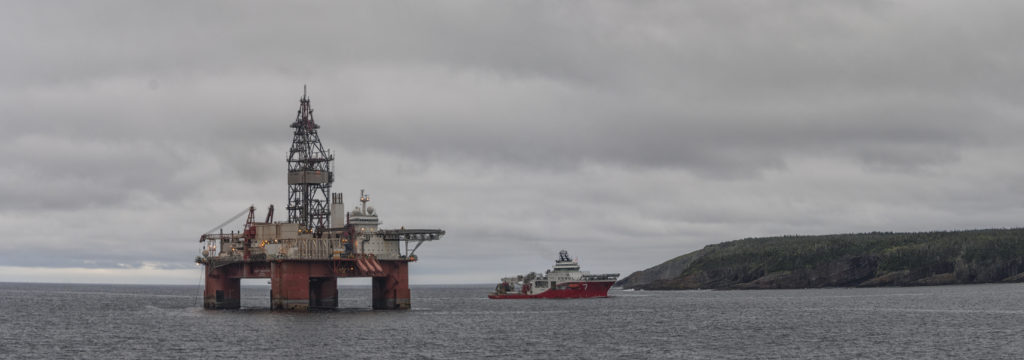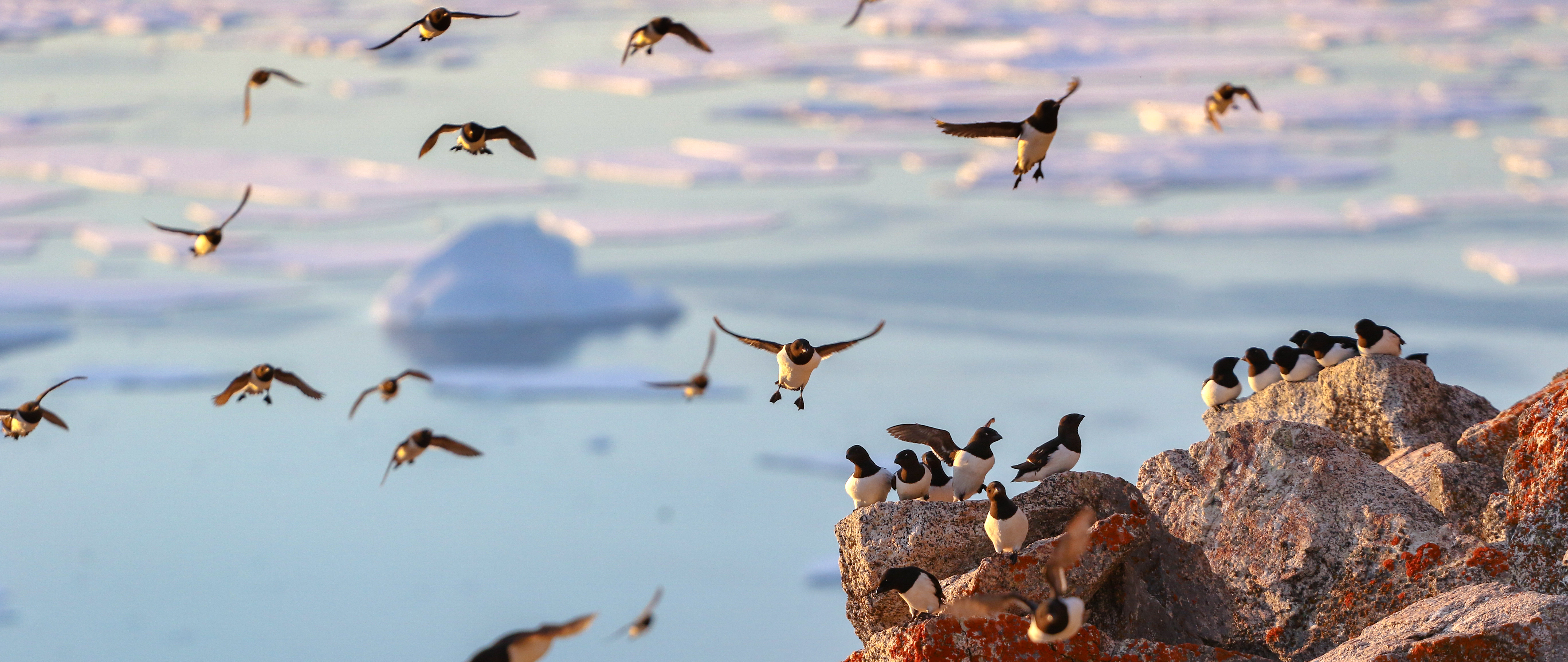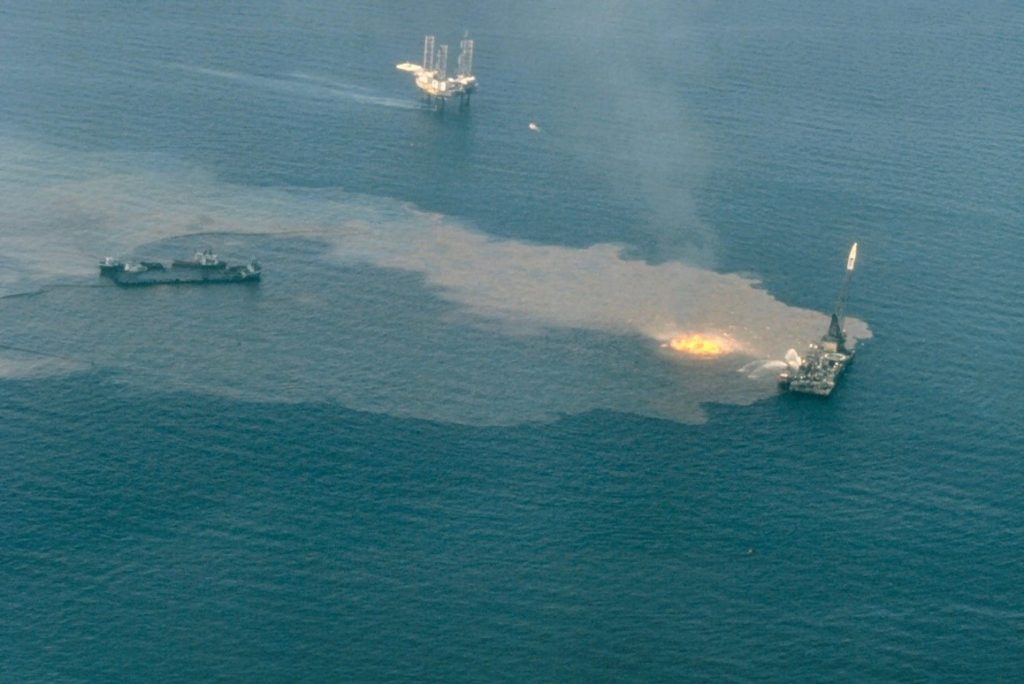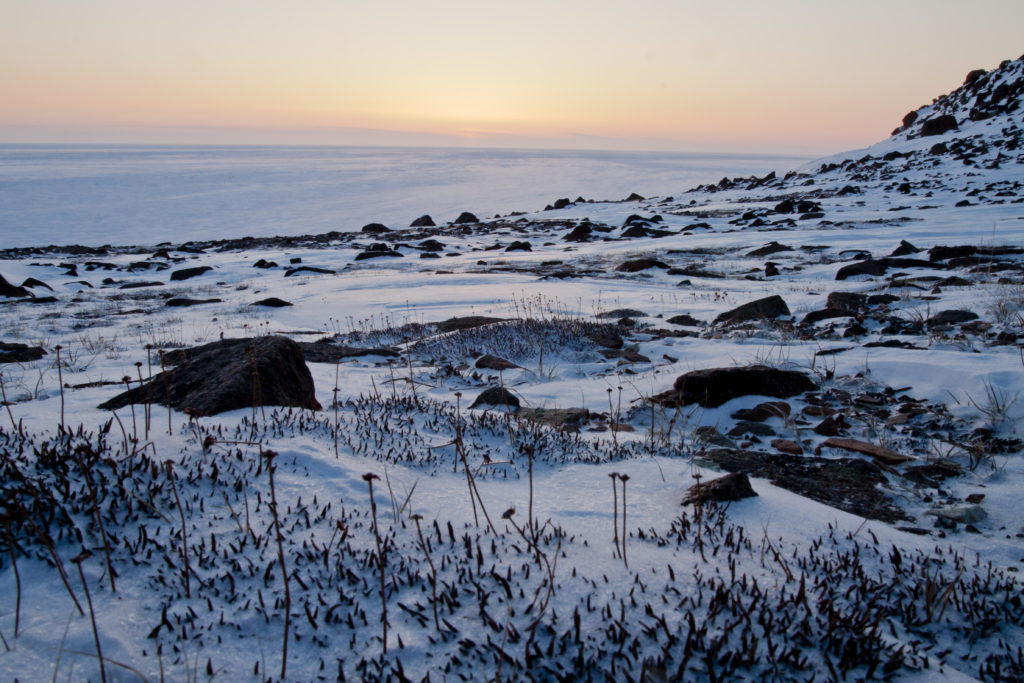Calgary Roughnecks in Hermitage Bay
What Newfoundland's latest oil spill tells us about the industry

The waters east of Newfoundland and Labrador are a rough place. Warm air mixing with icy water often creates thick fog, concealing the icebergs that drift down from Greenland. Its waves set world records, driven by coastal winds and ocean currents. Hurricanes moving northward along the Eastern seaboard bring high winds and heavy rain, only increasing in intensity as tropical oceans warm. It’s in these unpredictable waters that offshore rigs position themselves above oil fields to pull up almost 40 million litres of crude a day. Although Alberta’s tar sands are the face of oil production in Canada, offshore rigs have an undeniable share, one that has the potential to increase as melting ice opens the Arctic Sea to exploration. However, profits gained from deep-sea drilling carry huge risks to ocean health and human safety – with consequences that are becoming increasingly normalized.
On Friday, November 16 a connector pipe on Husky Energy’s ‘Searose’ failed, spilling 250 thousand litres of oil into the Atlantic Ocean 350 km east of Newfoundland. It was a batch spill, meaning the flow was quickly stopped. The floating production and offloading vessel has yet to start operating again, and neither have the other three rigs stationed in the area. But Husky’s incident, small compared to Exxon Shipping’s Exxon-Valdez and BP’s Deepwater Horizon, uncovers a greasy production culture that is prepared to accept environmental disasters as a side-effect of revenue.

Stakeholder priorities are clear. In the days before the spill – which Husky has euphemized as an ‘oil release’ – stormy weather prompted the Searose and other rigs to cease production. On Friday, despite 8m high waves, the Searose attempted to reconnect to the well and experienced mechanical failure. Primary coverage in the days following featured the headline: ‘Oil Spill costing $4M per day in deferred revenue’, demonstrating the lack of concern felt toward the aftermath. The revenue indicated is to the province: Newfoundland earns about $200,000 a day from production on the Searose alone. Perhaps this is why, despite admitting to having no idea why the pipe failed, all four rigs will restart once the investigation is complete.
An oil spill does affect more than revenue. 250,000 litres is about 2/3 of an Olympic swimming pool, a pittance compared to other headline-worthy spills but more than enough to do irreversible damage. Oil does not break down in the ocean. Among other effects, it will contaminate a bird’s feathers, crippling their ability to swim, fly, and stay warm. At this time of year, hundreds of thousands of murres and dovekies (seabirds) are migrating from the Arctic to winter in the Atlantic, vulnerable to pollutants in their environment. In 2004, when PetroCanada’s Terra Nova spilled 165,000 liters of oil in the region, over 10,000 birds were found oiled and dead. Seabirds have long lives and reproduce infrequently, unused to major disturbances. Deaths of such magnitude may have lasting impacts on population vulnerability- with rippling effects throughout the Arctic and Temperate ecosystems the birds reside in.

(Photo Cred @ericstemarie)
To date, only a handful of oiled birds have been found. This is hardly surprising and says nothing of the extent of the damage. The first flight scans following the spill saw no oil sheen on the surface; the turbulent Atlantic waves had already dispersed oil into pockets too small to be recovered. These conditions, combined with the distance from shore, mean there will be no pictures of sticky beaches, no choking wildlife washing up, and very few recovery efforts. Husky is responsible for the costs of clean up, but only if surface sheens are found. Cod and other fish will also be harmed by oil, but the effects are much harder to measure.
This is not the first time Husky has placed economic reasoning over environmental safety. In March 2017, an iceberg about the size of a 747 drifted to within 200 meters of the same vessel and production was not shut down. These are the same waters where the Titanic sunk. However calculated the risk was, the consequences of a collision would have been colossal. Husky was reprimanded for this lack of judgment. In August the rig was ordered to be shut down for nine days, upon which it was decided that deficiencies in safety protocol had been addressed and they were allowed to restart. During the spill on November 16th, it was noted that Husky did not need external approval to start up in the storm – not from the province nor the Canada-Newfoundland Labrador Offshore Petroleum Board (C-NLOPB) managing provincial oil operations. In fact, the Searose had correctly followed Husky’s internal protocol. Newfoundland Natural Resource Minister Siobhan Cody remarked of the spill: “If they did everything according to protocol, we need to change the protocol.”
Outrage following a disaster often calls for change, accompanied by promises from corporations to do better- and assurances that environmental integrity is taken very seriously. Yet, spills continue to happen. Perhaps this is because any movement of oil, whether in a ship or a pipeline, is inherently risky and the only certain way to prevent spills is to leave the oil in the ground. However, as Canada earns approximately $34 billion from crude oil exports each year, meaningful change is unlikely to be enacted by anyone with the power to do so. What about those promises to do better? As spill follows spill, the biggest concern from operating companies seems to be how to put the incident behind them and get right back to pumping oil – and profits.

(http://response.restoration.noaa.gov/index.php)
In fact, oil production, particularly from offshore rigs, is only expected to grow. As increased CO2 concentrations raise global temperatures, Arctic sea ice is melting to a greater extent each summer, thereby opening up the possibility of drilling for oil in polar regions. Norway has already begun- and other countries including Russia and the US are calling to follow suit. It is a fallacy to believe polar waters won’t become contaminated with oil. Although the Arctic sea is relatively calm, melting ice produces higher waters and scientists have already noticed an increase in ocean turbulence. The remote coastline is not well-explored and a steady flow of icebergs, for companies with the operating standards of Husky, would pose a constant risk. Amid heightened political tension, competition for lucrative oil fields throws another wrench into the mix: it is worth noting that the worst oil spill in history was an act of warfare.

Much like the Searose spill, disasters in the Arctic would have limited coverage. Although northern ecosystems are exceptionally fragile, there are very few people to bear witness to a spill or join in its cleanup. It is estimated that 13% of the world’s conventional oil lies above the Arctic Circle. Enough that, if released, would raise the globe to ever higher temperatures.
It is all too easy to blame the owners and operators of oil rigs when disasters happen. Surely whoever thought of starting production during the tail end of an Atlantic storm must be be held responsible. And they should. But companies like Husky Energy operate within the parameters society sets for them. The federal government and the Province of Newfoundland, earning royalties on every barrel, hold responsibility for allowing corporations to pump and ship oil- with all the accompanying risks. The C-NLOPB does not have safety regulations to prevent rigs from starting in dangerous conditions. Infractions, when they happen, do not result in penalties that force companies to rethink how they do business. And for all of us who drive a car, take a plane, buy goods shipped from overseas, or the countless other actions made possible by crude oil- we need not wonder why oil spills still happen. We have put value on the products of oil and normalized the devastation production brings.
Edited by Kody Crowell
